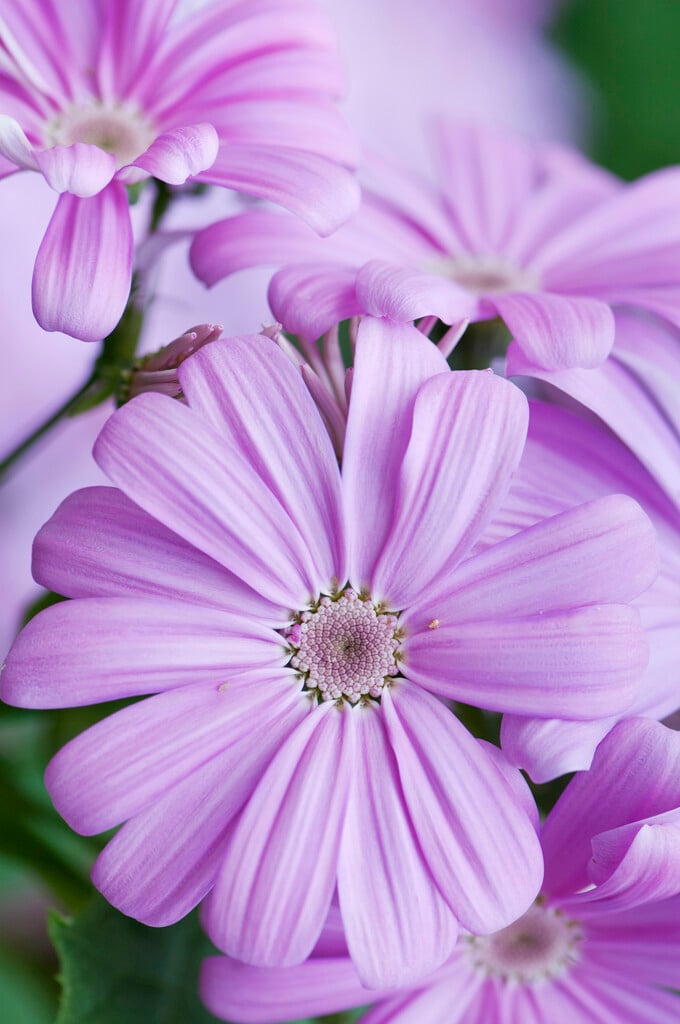Pericallis × hybrida
florist's cineraria
A tender, clump-forming perennial often grown as an annual, with oval, heart-shaped or arrow-shaped green leaves up to 30cm long. Clusters of daisy-like flowers are produced from winter to spring, in a range of colours including red, pink, purple, blue and white and sometimes with a contrasting central 'eye'
Size
Ultimate height
0.5–1 metresTime to ultimate height
1–2 yearsUltimate spread
0.5–1 metresGrowing conditions
Moisture
Moist but well–drained, Well–drainedpH
Acid, Alkaline, NeutralColour & scent
| Stem | Flower | Foliage | Fruit | |
| Spring | Red Pink Purple Blue White | Green | ||
|---|---|---|---|---|
| Summer | Green | |||
| Autumn | Green | |||
| Winter | Red Pink Purple Blue White | Green |
Position
- Full sun
- Partial shade
Aspect
East–facing or South–facing or West–facing
Exposure
Sheltered Hardiness
H1CBotanical details
- Family
- Asteraceae
- Native to GB / Ireland
- No
- Foliage
- Evergreen
- Habit
- Clump forming
- Genus
Pericallis are a genus of flowering plants native to the Canary Islands. They are generally considered as annuals and produce ovate, bushy green leaves and daisy-like flowers in vivid colours such as purples, pinks, blues and reds
- Name status
Correct
How to grow
Cultivation
In frost-free areas, grow in fertile, well-drained soil, in sun with midday or part shade. In colder areas, grow as a houseplant or in containers that can be moved indoors over winter. Keep watered, especially during dry periods
Propagation
Propagate by seed, sown at 13-18°C from spring to midsummer, or by semi-ripe cuttings in summer
Suggested planting locations and garden types
- City and courtyard gardens
- Cottage and informal garden
- Houseplants
- Patio and container plants
- Sub-tropical
- Bedding
Pruning
Deadhead to encourage further flowers
Pests
May be susceptible to red spider mite, glasshouse whitefly, and chrysanthemum leaf miner
Diseases
Generally disease-free
Get involved
The Royal Horticultural Society is the UK’s leading gardening charity. We aim to enrich everyone’s life through plants, and make the UK a greener and more beautiful place.
